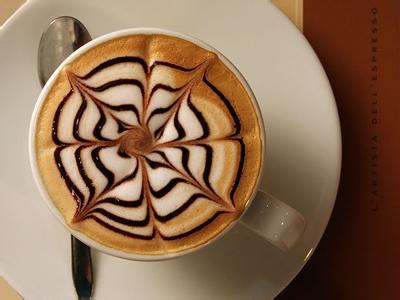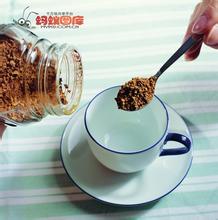Introduction of Fine Coffee varieties in Indonesian Musk Coffee Manor
In the 1950s, the resources of Chinese great cats were estimated to be more than 200000. After long-term overhunting, the population decreased rapidly year by year. By the early 1980s, the natural population of Chinese great cats was less than 20, 000. By the early 1990s, Zhejiang, Jiangxi, southern Anhui, Guizhou and other places have been very rare, and the population of big cats is endangered in China.
The investigation and analysis of animal resources in Qiyunshan Nature Reserve of Jiangxi Province in 2007 shows that the cat is a rare species.
Outside China, even in Laos, where hunting is very heavy, it can be found occasionally; in Cambodia, Vietnam and Myanmar, it is the most common mammal tracked by cameras; however, in some other areas it has become extinct on a large scale and the population trend is declining. [11]
Artificial breeding
In the 1960s and 1970s, 30 animals were raised in Kunming Animal Research Institute and more than 10 in Hangzhou Zoo, but there was no breeding population. One of the reasons is that the problem of reproduction has not been really solved. Guangzhou Zoo has kept big cats for quite a long time and has been able to breed successfully. There are small populations of big cats at the Ahmedabad Zoo in India, and they are raised to collect their glandular secretions. They have a special directional ability, which is guided by the incense secreted by cystic incense glands. When it is active, all the prominent objects along the way, such as tree trunks, stakes and stone edges in its habitat, will often be foamed with the secretions of incense glands, commonly known as "wiping stakes". This kind of scrubbing acts as a marker in the field, but also plays a role of communication with other similar species. When it gets food or encounters an enemy, it can accurately return to the cave as quickly as possible following the route indicated by the mark left behind. The characteristic of this secretion is that the odor is volatile and lasts for a long time, which is suitable for cats to get information at a certain distance from the cave, or when there are plant obstacles in the space, and when the interval is longer. [5]
Big cats eat a variety of food, including small beasts, birds, amphibians and reptiles, crustaceans, insects, such as rodents, birds, snakes, frogs, fish, crabs, bird eggs, insects, earthworms and wild birds. Plant foods include the stems and leaves of Solanaceae, seeds of many kinds of figs, cloth dregs, sour berries, etc., but the cat has poor digestion of plants.
Coconut cats are omnivores. In addition to eating seeds, they also eat insects, snakes, birds, amphibians and reptiles, so the feces discharged by really wild coconut cats will be mixed with all kinds of substances. Local farmers in Indonesia catch coconut cats to raise them and feed coffee beans to make them. But there is a difference between artificial cultivation and natural ones after all.
In the coffee industry, Kopi Luwak is widely regarded as a product with novelty as the selling point. "the consensus in the industry is that it tastes bad," said the American Special Coffee Association (Specialty Coffee Association of America,SCAA). SCAA quoted a coffee expert as saying: "obviously, the selling point of Kopi Luwak is its story, not its quality." Using the SCAA standard, Kopi Luwak scored two points lower than the lowest score for the other three types of coffee. It can be speculated that the processing of Kopi Luwak diluted the high-quality acidity and taste and made the taste more insipid. Of course, many people also seem to regard this insipid taste as the advantage of this kind of coffee. "
Tim Carman, a food columnist for the Washington Post, commented on Kopi Luwak sold in the United States and concluded that "it tastes like Folger coffee." It's like rotten, lifeless taste. It's like petrified dinosaur shit in bath water. I can't finish it. "
The civet likes to choose the most ripe, sweet, juicy coffee fruit in the coffee tree as food. The coffee fruit passes through its digestive system, and only the pulp on the outside of the fruit is digested, and the hard coffee beans are then excreted intact by the civet's digestive system.
In this way, in the process of digestion, the coffee beans have an unparalleled magical change, the flavor tends to be unique, the taste is particularly mellow, and the rich, round and sweet taste is also incomparable to other coffee beans. This is due to the fact that the civets' digestive system destroys the protein in the coffee beans, making the coffee much less bitter and increasing the round taste of the coffee beans.
Because wild civets are obviously better at selecting good coffee fruits, this kind of coffee has outstanding characteristics.
The course of development
The company M.P. Mountanos, which first introduced Kopi Luwak coffee to the United States, pointed out that at first, when I heard about this kind of coffee fermented in the body, I thought it was a joke in the industry, but I didn't take it seriously. later, I saw a special report on Kopi Luwak in National Geographic Magazine and became interested in her. it took seven years to find a stable source of supply and began to introduce a small amount to the United States. What's the flavor of this coffee? Generally speaking, Indonesian coffee has the taste of mud and traditional Chinese medicine, and its consistency is the highest in all continents, but Kopi Luwak has a stronger taste and consistency, which is almost close to syrup, and its flavor is very special. If you don't like Indonesian coffee in the first place, you must hate Kopi Luwak even more. If you prefer the fishy smell of aged beans, you may love this alternative coffee. Experts who have tasted Kopi Luwak have put forward a polarized evaluation, and some people compare it to the best coffee in the world. Although it is the best, whether you are willing to spend thousands of yuan to drink a cup of Kopi Luwak is your personal preference.

Important Notice :
前街咖啡 FrontStreet Coffee has moved to new addredd:
FrontStreet Coffee Address: 315,Donghua East Road,GuangZhou
Tel:020 38364473
- Prev

Clean and balanced Costa Rican Yersalo coffee varieties taste characteristics of the manor boutique coffee bean style
Costa Rican coffee has always been regarded as a perfect type of classic flavor, balanced, clean and mild is his tone. This batch of western valley Yersalo processing plant is famous for its excellent natural geographical conditions and excellent regional planting management techniques. the almost perfect classical flavor, with lively citrus flavor in acid, BlackBerry fruit aroma, acidity and taste thick, melon
- Next

Introduction to the characteristics of Cuban Crystal Mountain Coffee Flavor Manor with clean and meticulous taste
The country is divided into 15 provinces, one special zone, and 168 cities under the province. [3] the names of the provinces are as follows: Pinar del Ro, Artemisa, Mayabeque, Provincia de la Habana, Matanzas, Cienfuegos, Cienfuegos,
Related
- Detailed explanation of Jadeite planting Land in Panamanian Jadeite Manor introduction to the grading system of Jadeite competitive bidding, Red bid, Green bid and Rose Summer
- Story of Coffee planting in Brenka region of Costa Rica Stonehenge Manor anaerobic heavy honey treatment of flavor mouth
- What's on the barrel of Blue Mountain Coffee beans?
- Can American coffee also pull flowers? How to use hot American style to pull out a good-looking pattern?
- Can you make a cold extract with coffee beans? What is the right proportion for cold-extracted coffee formula?
- Indonesian PWN Gold Mandrine Coffee Origin Features Flavor How to Chong? Mandolin coffee is American.
- A brief introduction to the flavor characteristics of Brazilian yellow bourbon coffee beans
- What is the effect of different water quality on the flavor of cold-extracted coffee? What kind of water is best for brewing coffee?
- Why do you think of Rose Summer whenever you mention Panamanian coffee?
- Introduction to the characteristics of authentic blue mountain coffee bean producing areas? What is the CIB Coffee Authority in Jamaica?

